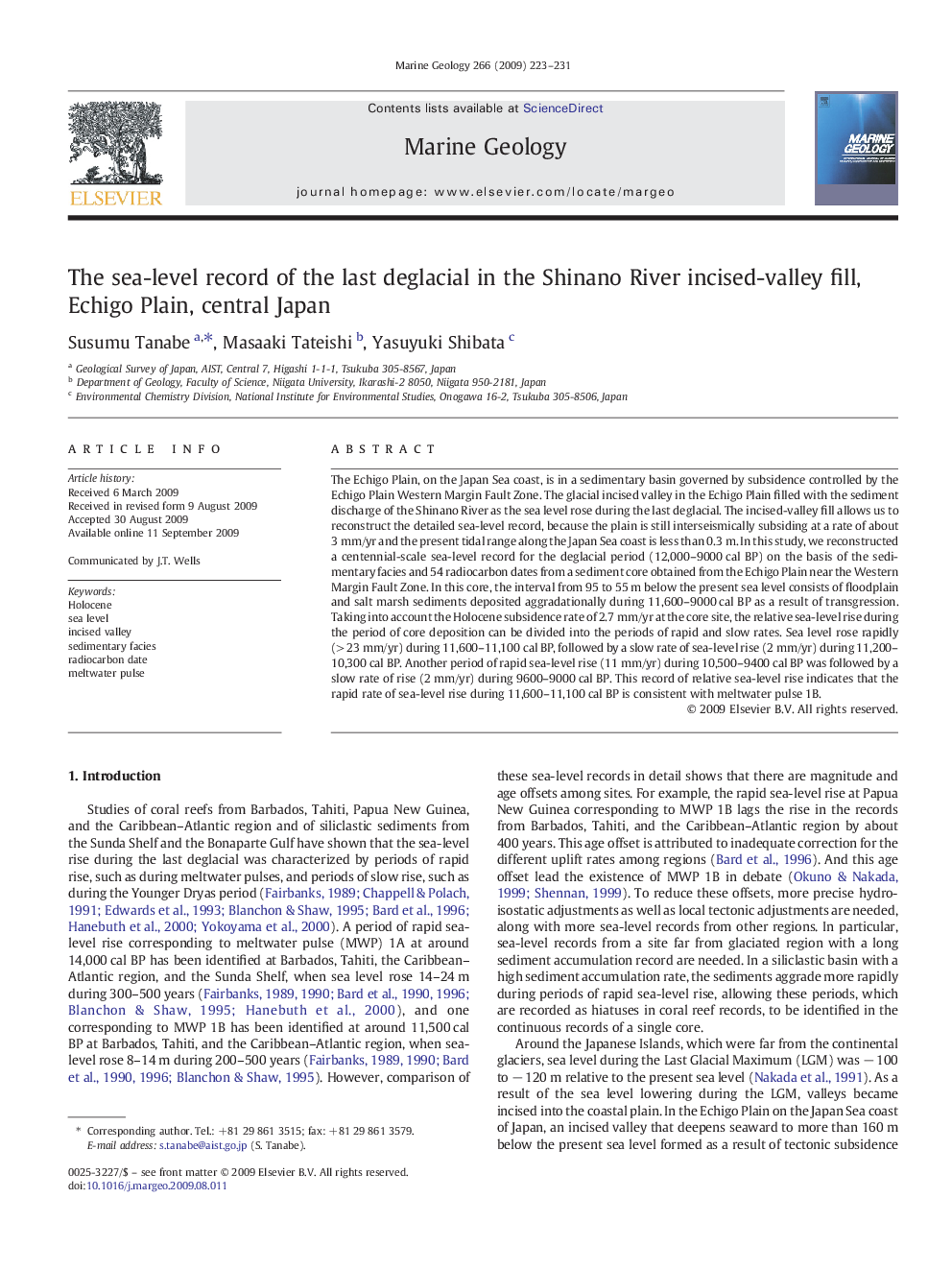| Article ID | Journal | Published Year | Pages | File Type |
|---|---|---|---|---|
| 4718976 | Marine Geology | 2009 | 9 Pages |
The Echigo Plain, on the Japan Sea coast, is in a sedimentary basin governed by subsidence controlled by the Echigo Plain Western Margin Fault Zone. The glacial incised valley in the Echigo Plain filled with the sediment discharge of the Shinano River as the sea level rose during the last deglacial. The incised-valley fill allows us to reconstruct the detailed sea-level record, because the plain is still interseismically subsiding at a rate of about 3 mm/yr and the present tidal range along the Japan Sea coast is less than 0.3 m. In this study, we reconstructed a centennial-scale sea-level record for the deglacial period (12,000–9000 cal BP) on the basis of the sedimentary facies and 54 radiocarbon dates from a sediment core obtained from the Echigo Plain near the Western Margin Fault Zone. In this core, the interval from 95 to 55 m below the present sea level consists of floodplain and salt marsh sediments deposited aggradationally during 11,600–9000 cal BP as a result of transgression. Taking into account the Holocene subsidence rate of 2.7 mm/yr at the core site, the relative sea-level rise during the period of core deposition can be divided into the periods of rapid and slow rates. Sea level rose rapidly (> 23 mm/yr) during 11,600–11,100 cal BP, followed by a slow rate of sea-level rise (2 mm/yr) during 11,200–10,300 cal BP. Another period of rapid sea-level rise (11 mm/yr) during 10,500–9400 cal BP was followed by a slow rate of rise (2 mm/yr) during 9600–9000 cal BP. This record of relative sea-level rise indicates that the rapid rate of sea-level rise during 11,600–11,100 cal BP is consistent with meltwater pulse 1B.
